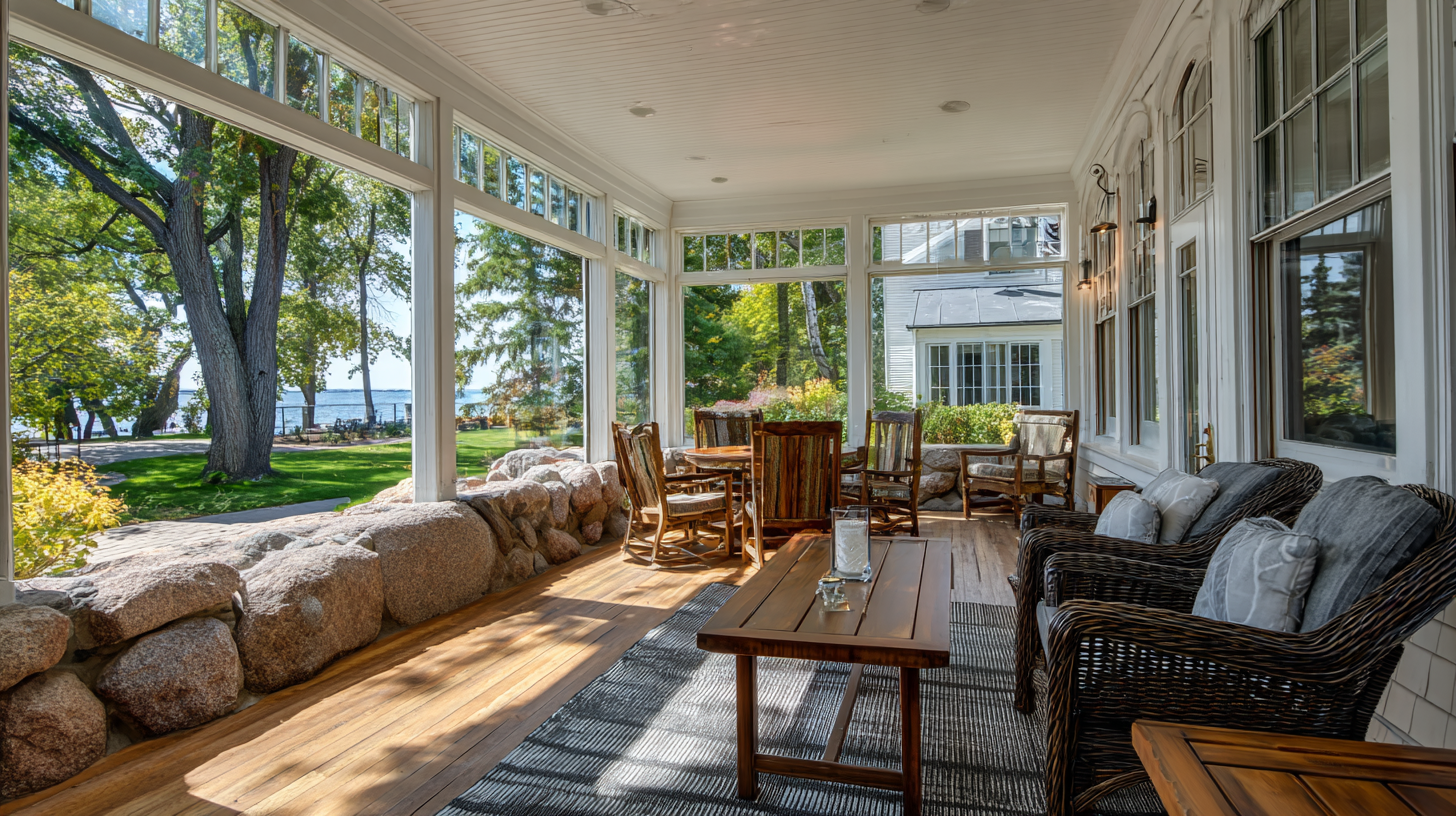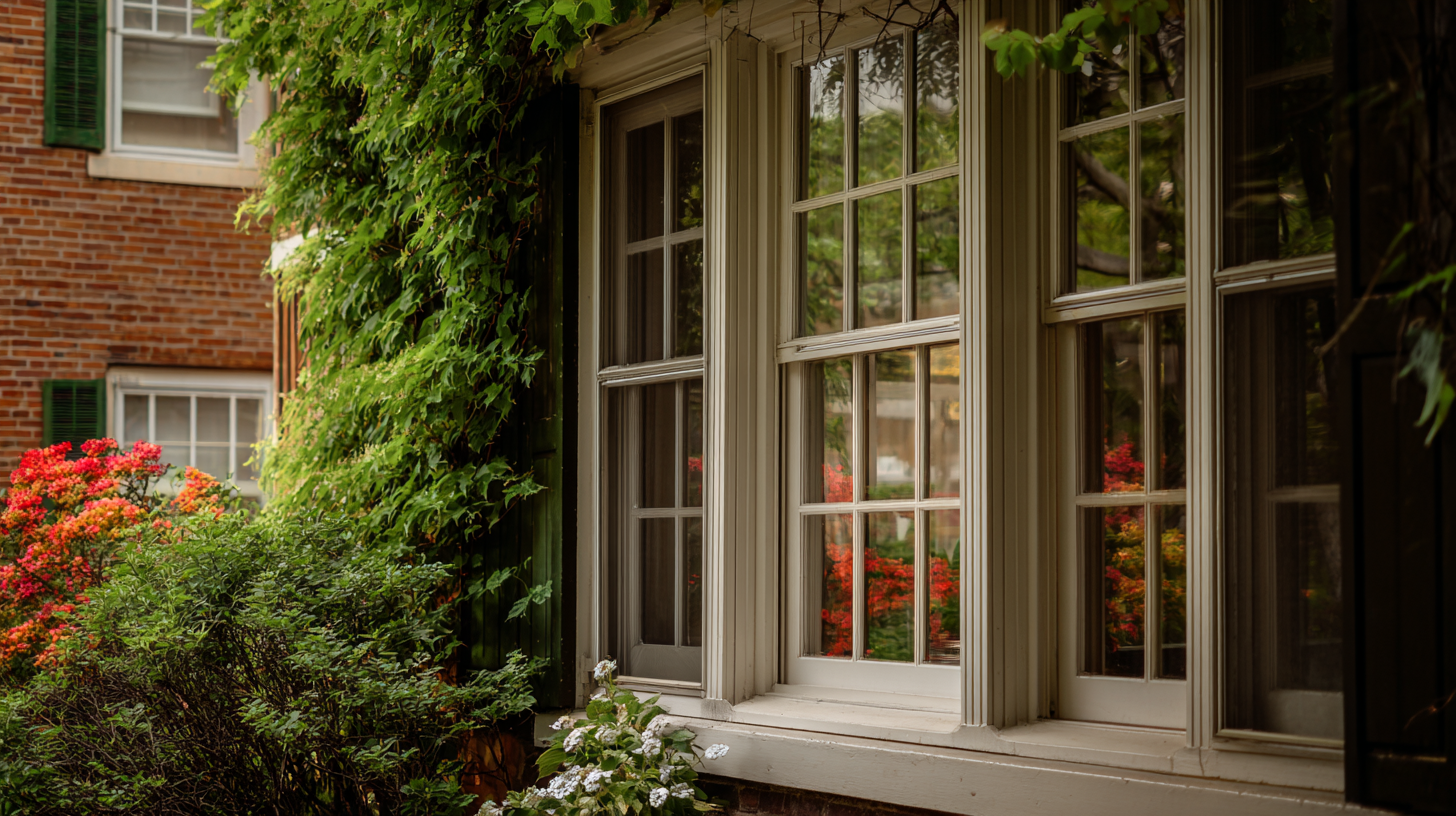How to Choose the Best Storm Windows for Your Home or Business Needs
When it comes to protecting your home or business from extreme weather conditions, the choice of storm windows can significantly impact energy efficiency and safety. According to the U.S. Department of Energy, properly installed storm windows can reduce heat loss by up to 50%, making them a vital consideration for property owners looking to enhance energy conservation. Moreover, a report from the National Oceanic and Atmospheric Administration (NOAA) highlighted that the frequency of severe storms has increased by 30% over the past few decades. These alarming trends make it essential to choose the right storm windows that not only withstand harsh weather but also complement your building's aesthetics. In this blog, we will provide a comprehensive checklist to help you navigate the options available in the market, ensuring that you select the storm windows best suited for your unique needs.

Factors to Consider When Selecting Storm Windows for Enhanced Home Protection
 When selecting storm windows for enhanced home protection, several crucial factors should guide your decision. First and foremost, consider the material of the windows. Common options include vinyl, aluminum, and wood, each offering distinct advantages and disadvantages. Vinyl windows are known for their energy efficiency and low maintenance, while aluminum provides durability and strength. Wood, although aesthetically pleasing, requires regular upkeep to prevent deterioration. Understanding the specific conditions in your area, such as climate and typical weather patterns, can help determine the best material for your needs.
When selecting storm windows for enhanced home protection, several crucial factors should guide your decision. First and foremost, consider the material of the windows. Common options include vinyl, aluminum, and wood, each offering distinct advantages and disadvantages. Vinyl windows are known for their energy efficiency and low maintenance, while aluminum provides durability and strength. Wood, although aesthetically pleasing, requires regular upkeep to prevent deterioration. Understanding the specific conditions in your area, such as climate and typical weather patterns, can help determine the best material for your needs.
Another important aspect is the style and design of the storm windows. There are various configurations, including full-window storm systems, insert styles, or removable options. Assessing the architectural style of your home or business will help you choose windows that not only provide protection but also complement the overall aesthetic. Additionally, check for ratings and certifications such as impact resistance and insulation performance, as these can significantly influence the safety and energy efficiency of your property. Balancing these factors will ensure you select storm windows that enhance protection while aligning with your personal or business needs.
Comparative Analysis of Storm Window Materials: Vinyl, Aluminum, and Wood
When selecting storm windows, the choice of material plays a crucial role in performance, durability, and aesthetics. A comparative analysis reveals that vinyl, aluminum, and wood each come with distinct advantages and drawbacks. According to a comprehensive report by the American Architectural Manufacturers Association (AAMA), vinyl storm windows are praised for their excellent energy efficiency, with up to 35% better insulation than traditional wooden frames. This makes vinyl an attractive option for homeowners seeking to reduce heating and cooling costs.
On the other hand, aluminum windows boast unparalleled strength and are typically more cost-effective upfront. The North American Fenestration Standards (NAFS) suggest that aluminum is inherent to modern designs, promoting slim profiles that maximize visibility. However, it's important to note that aluminum can be less efficient in terms of thermal performance unless properly treated or insulated. Wood windows, while providing natural beauty and insulation properties, require regular maintenance to prevent decay and damage from weather elements, as noted by the U.S. Department of Energy.
Ultimately, the choice between these materials should depend on specific project needs, local climate conditions, and budget considerations, emphasizing the importance of thorough research and consultation with professionals.

Emerging Trends in Storm Window Technology for 2025 and Beyond
In 2025 and beyond, the storm window industry is poised for significant advancements driven by emerging technologies and the growing demand for energy efficiency. According to a report by Research and Markets, the global storm window market is expected to grow at a CAGR of 6.2% over the next five years, reflecting an increasing awareness among homeowners and businesses about the benefits of storm windows. Innovations such as low-emissivity glass and advanced insulating frames are becoming standard, significantly enhancing energy performance and comfort levels within structures.
Moreover, sustainability trends are influencing consumer choices, with an emphasis on materials that minimize environmental impact. The use of recycled materials for window frames and glazing is gaining traction, as studies show that homes equipped with energy-efficient storm windows can reduce heating and cooling costs by up to 30%. As manufacturers invest in research and development to create products with superior performance ratings, the future of storm windows will not only focus on protection against harsh weather but also on contributing to lower carbon footprints and energy conservation efforts.
Cost-Benefit Evaluation: Are Storm Windows Worth the Investment?
When considering storm windows, a cost-benefit evaluation is essential to determine if they are worth the investment for your home or business. Storm windows can provide significant advantages such as increased energy efficiency, noise reduction, and protection from harsh weather conditions. By creating an additional barrier against the elements, storm windows can help to reduce heating and cooling costs, leading to savings on utility bills in the long run.
Tip: Before making a purchase, assess the different types of storm windows available, including interior and exterior options. Each type has its benefits, so it’s crucial to choose the one that best fits your specific needs and preferences. Additionally, consider the materials — vinyl, aluminum, and wood each offer various durability and insulation advantages.
Another consideration is installation and maintenance costs. Sometimes, the initial investment may seem high, but the longevity and lower maintenance of quality storm windows can provide financial relief over time. Tip: Consult with a professional to evaluate potential installation expenses and any available incentives or rebates for energy-efficient home improvements. This can help further improve the overall cost-effectiveness of your decision to invest in storm windows.
Sustainable Solutions: Eco-Friendly Options for Storm Windows
When selecting storm windows for your home or business, considering eco-friendly options is essential not only for sustainability but also for long-term savings. Eco-friendly storm windows come in a variety of materials, such as recycled aluminum, fiberglass, and even sustainably sourced wood. These materials not only reduce your carbon footprint but often provide excellent insulation, helping to reduce energy consumption. By opting for such alternatives, property owners can enjoy improved energy efficiency while minimizing environmental impact.
Additionally, modern eco-friendly storm windows often feature low-emissivity coatings and advanced glazing techniques that enhance thermal performance. These innovations keep your interior comfortable year-round, regardless of outside weather conditions, while also reducing reliance on heating and cooling systems. Investing in sustainable storm windows is a strategic choice that aligns ecological responsibility with practical benefits, ensuring that your property remains protected and energy-efficient. As you search for the best storm windows, prioritize options that reflect your commitment to environmental stewardship and enhance your building's overall performance.